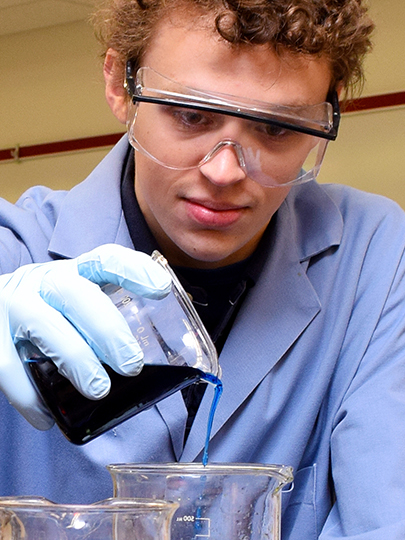Jacob Teeter has received a Department of Energy Office of Science Graduate Student Research award for his current research at the university. The awards are presented each year to students nationwide whose work reflects the mission of the Office.
Teeter received the award for his proposed SCGSR research project, “Bottom-up Engineering of Nanoribbon Properties through Systematic Structural Modification,” to be conducted at Oak Ridge National Laboratory.
From the Office of Science Graduate Student Research:
“The selection of Jacob Teeter for the SCGSR award is in recognition of outstanding academic accomplishments and the merit of the SCGSR research proposal, and reflects Jacob Teeter’s potential to advance the Ph.D. studies and make important contributions to the mission of the DOE Office of Science. ”
Congratulations, Jacob!










